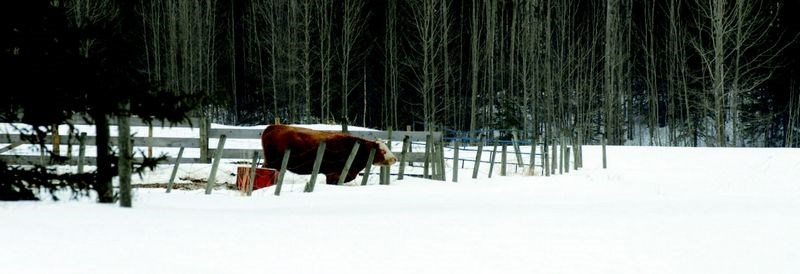After a couple of years of medium to poor crops in the local area, some cautious hope is germinating in all this snow.
"The farmers are certainly happy to see the amount of snow, but that is only part of it," said Denise McLean, a resource development agrologist based in Prince George with the Ministry of Agriculture.
"It's just a question of what happens when it melts. It all depends on whether the water gets into the ground in the spring when it thaws."
According to data gathered by the provincial Ministry of Environment and the federal Environment Canada agency, the winter started off slowly but precipitation gathered momentum in the latter half of winter and still has not stopped even with the official start of spring only three weeks away.
"Total precipitation of the year to date is 112.5 mm, [which is] 133 per cent of the normal of 84.1 mm," said Environment Canada's Jim Steele.
This offset a minimal amount of snow in late 2010, the beginning half of winter.
"If our accumulation trends remain the same, we hope to see normal snowpacks," said Lyle Larsen, a flood forecaster for the Ministry of Environment. "There are some areas, particularly around the Peace country that were really short on water last year and a normal to an above-normal snowpack would be really welcome."
McLean said the results vary from region to region. Last year, the Smithers region had a healthy amount of water and crops there grew well, but Prince George and Vanderhoof farmers suffered through drought conditions.
"I am glad for every foot of snow we get," said Roland Baumann, a cattleman and crop grower in the Vanderhoof area. "The snow walls are getting high along the driveway, I am pleased about that. We need it to replenish our rivers, our lakes, our reservoirs. I am not worried with the way it looks now. I hope it comes through with a cooler and damper year. It has been scary. Since I first started doing this in '93, last year was the driest year I've ever seen. I think we deserve a normal year again. People are running on their last bales. We need to get some stockpiles again."
McLean said the deeper amounts of snow at the end of winter has another negative effect on crops, as well.
"This deep snow has caused a problem with wildlife coming in and going after hay bales," she said. One farmer recently reported losing 500 pounds of feed per day to deer in the Vanderhoof area.
"The deer, elk and moose are feeding on what hay is there - stored feed was meant for the cows and it has to be replaced. And they don't just quietly eat the edges of the bales, they tear into them. They do a lot of damage. The elk especially can be very aggressive which poses a real problem. The elk will go so far as to push cattle right out of the feeders."
Larsen said there was still a month or more of snowpack accumulation expected in the mountains. How that moisture is released, due to the strength and duration of the warm trends of spring, dictates how much water makes it into the soil versus how much simply rolls into the rivers and heads for the ocean without giving much of a drink to crops and forests.


